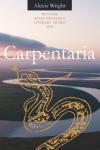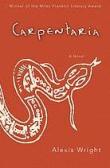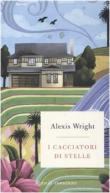AustLit
Latest Issues
AbstractHistoryArchive Description
Notes
-
Dedication: For Toly.
-
Author's note: Inspired by all of the beauty that comes from having an ancient homeland that is deeply loved by those who guard it, and especially by my countrymen, Murrandoo Yanner and Clarence Waldon.
Publication Details of Only Known VersionEarliest 2 Known Versions of
Other Formats
- Sound recording.
- Braille.
- Large print.
- Dyslexic edition.
Works about this Work
-
Free to Roam : Foot Notes on Sovereignty in Indigenous Film and Fiction
2024
single work
criticism
— Appears in: JASAL , 4 November vol. 23 no. 2 2024;'Engagements with walking, wandering, roaming the land are not new to Australian writers or filmmakers. A recognition of ambulation as discursive, as world-making, continues today: “First you have to learn to walk,” announces Stephen Muecke in a new book, co-authored with Paddy Roe, on learning how to move on Country. Muecke’s teachers and guides are Indigenous knowledge-holders; he walks only in their footsteps. But in post-Mabo narratives more generally, whose lands are being walked on? Whose worlds are being made as mobility is performed? This essay examines the trope of roaming and of the foot in contemporary Australian Indigenous-authored narratives, wherein walking or mobility in story invokes not only a connection to Country but an enactment of law making and an assertion of Indigenous sovereignty. In a seminal speech in Adelaide in 2003, Indigenous legal philosopher Irene Watson asked “Are we Free to Roam?” Watson asserted the freedom to walk, “to sing and to live with the land of [one’s] ancestors” as a measure of the attainment of Indigenous sovereignty. She called for Aboriginal voices to look “beyond the limited horizon” of the time towards a moment and place of sovereignty. I argue that these voices have now emerged. Beginning with an examination of Ivan Sen’s film Beneath Clouds (2002), I then examine walking and movement in a selection of more recent Indigenous-authored novels (by Alexis Wright, Kim Scott and Julie Janson) and film (by Richard J. Frankland), as well as in new legal thinking which suggests that law-walking might be more prevalent in Australia than previously known.' (Publication abstract)
-
Writing Orality : Australian Aboriginal Voices in Alexis Wright’s Carpentaria
2024
single work
criticism
— Appears in: English Studies , vol. 105 no. 1 2024; (p. 118-141)'Australian Aboriginal stories have thrived for thousands of years through oral tradition and Aboriginal author Alexis Wright invokes this tradition in the construction of her novel Carpentaria. This article investigates the orality of Carpentaria, which stages “oral” narrators who speak differently to Aboriginal and non-Aboriginal readerships. First, using Bakhtin’s notion of “speech genre”, the article explores why Wright creates these two narrative layers. Second, it investigates the language use and tone of voice in the framing narrative that addresses non-Indigenous readers. Third, it looks closely at Wright’s linguistic experimentation in the embedded narrative, creating multiple oral effects through language and mobilising the storytelling dynamics of performance, spontaneity, rhythms and mnemonics. Finally, it discusses how her creative use of orality plays off and with its Western literary conceptions and enacts cross-cultural communication between the two readerships.' (Publication abstract)
-
From Brest…: Indigenous Environmental Practices as Responses to Pollution
2023
single work
essay
— Appears in: Antipodes , vol. 36 no. 1 2023; (p. 155-157)'The Marina du Château room was the perfect location for the 2021 international conference "Indigenous Environmental Practices as Responses to Pollution," directly following the 2021 conference on Alexis Wright's Carpentaria in Brest. On October 21 and 22, 2021, the sunlit room lined with high windows opening on a large, oval balcony directly looked out on the Brest Harbour, such that the sky and ocean became integral parts of the conference venue. The ocean's mesmerizing power added an ethereal touch to the intriguing conversations of all participants, including Alexis Wright and Tara June Winch. Brest was the perfect point of convergence between the Americas and Oceania, with participants from all over the world, virtually and on-site, reflecting on contemporary environmental challenges and the different ways Indigenous artistic practices tackle them.' (Introduction)
-
Alexis Wright’s Story Words and Story-worlds Out of the Shadows : The Politics of Reading and Writing Carpentaria
2023
single work
criticism
— Appears in: New Writing , vol. 20 no. 3 2023; (p. 348-358)'Drawing on Alexis Wright’s interviews and essays on the creative writing process, this article gives insight into how the Waanyi novelist conceived Carpentaria (2006) and the philosophy she holds for literature and storytelling. In the first two sections, notions of truth, modal thought, reference, simulation, imagination and reality will be discussed in relation to Lubomír Doležel’s propounded theory of possible worlds. Literary theory, the philosophy of fiction and cognitive literary studies are the three main areas that will be investigated to probe the storytelling dynamics of imagination and reality. In the last section, we will bring to the fore the ways in which novel-writing is for Alexis Wright an exercise in gap-filling, one that brings the silenced details out of the shadows.'
Source: Publisher's blurb.
-
Australia in Three Books
2023
single work
review
— Appears in: Meanjin , Autumn vol. 82 no. 1 2023; (p. 24)
— Review of Up, Not Down, Mate! : Thoughts from a Prison Cell 1981 selected work poetry ; Carpentaria 2006 single work novel ; All That’s Left Unsaid 2022 single work novel
-
When the Narrator's Art Matches the Magical Storytelling
2006
single work
review
— Appears in: The Age , 19 August 2006; (p. 22)
— Review of Carpentaria 2006 single work novel -
Calming Influence in Balance Fraught with Pain
2006
single work
review
— Appears in: The Canberra Times , 2 September 2006; (p. 13)
— Review of Carpentaria 2006 single work novel -
Phantasmagorical Tale Fills a Legendary Landscape
2006
single work
review
— Appears in: The Sydney Morning Herald , 16-17 September 2006; (p. 32-33)
— Review of Carpentaria 2006 single work novel -
Small-Town Dreaming
2006
single work
review
— Appears in: The Advertiser , 30 September 2006; (p. 10)
— Review of Carpentaria 2006 single work novel -
A Weird Mob
2006
single work
review
— Appears in: The Bulletin , 10 October vol. 124 no. 6541 2006; (p. 70)
— Review of Carpentaria 2006 single work novel -
The Call of the Claypans
2006
single work
biography
— Appears in: The Sydney Morning Herald , 9-10 September 2006; (p. 30-31) -
From Here to Carpentaria
2006
single work
column
— Appears in: The Age , 9 September 2006; (p. 26-27) -
Dispatches from the Reviewing Front ...
2006
single work
column
— Appears in: The Australian Literary Review , October vol. 1 no. 2 2006; (p. 22) Matchett comments on reviews of the three books listed here as subjects. -
A List Both Short and Sweet
2007
single work
column
— Appears in: The Sydney Morning Herald , 28-29 April 2007; (p. 37) -
On Writing Carpentaria
2007
single work
criticism
— Appears in: Heat , no. 13 (New Series) 2007; (p. 79-95) The Canberra Times , 23 June 2007; (p. B4)Wright describes what drove her to write her novel Carpentaria, stating that 'For a long time while I was exploring how to write Carpentaria, I tried to come to some understanding of two principal questions: firstly, how to understand the idea of Indigenous people living with the stories of all the times of this country, and secondly, how to write from this perspective.'
Awards
- 2011 Shortlisted Australian Centre Literary Awards — The Kate Challis RAKA Award
- 2010 inaugural winner Vision Australia Braille Book of the Year Award
- 2008 longlisted International IMPAC Dublin Literary Award
- 2007 winner New South Wales Premier's Literary Awards — Christina Stead Prize for Fiction
- 2007 winner Queensland Premier's Literary Awards — Best Fiction Book Best Fiction Book
- Gulf of Carpentaria area, Far North Queensland, Queensland,
- Gulf of Carpentaria area, Far North Queensland, Queensland,















